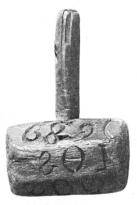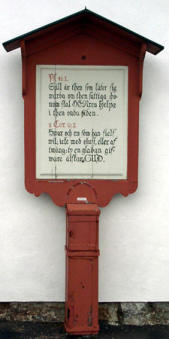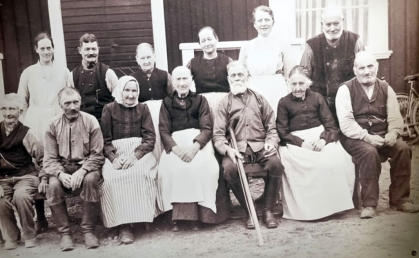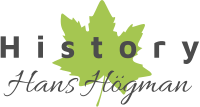

Copyright © Hans Högman 2021-09-22


Poor Relief in Sweden Formerly
Introduction
Poor relief (Swe: fattigvård) was the old-fashioned
care provided by society for poor people who could
not support themselves. The very poorest were
housed in the parish poorhouse, (Swe:
fattighus/fattigstuga), where children, the elderly,
and disabled paupers were cared for, but also had
to take care of each other.
“Rotegång”, or roaming, was a system of providing
for the very poorest in peasant society. Those
paupers who could not be placed in poorhouses
were assigned to a “rotegång”. The pauper had to
walk between the farms according to a set order.
These paupers (rotehjon) were expected to help out
and do right by each other. “Rotegång” literally
means “walk the parish districts” (rote = district).
A translation such as “transient parish paupers”
might work in English.
It was those of the destitute paupers who could not
be placed in a poorhouse that were referred to the
rotegång. The Homesteads in rural parishes were
traditionally divided into districts called rote. A
village rote (district) consisted usually of six
homesteads. Each rote was responsible for one
pauper and the paupers were shifted between the
homesteads according to a schedule: typically the
pauper stayed on each homestead for a few days
up to a week at a time. They were expected to
contribute with what they could in exchange for
food, care, and housing.
The Middle Ages
In the Middle Ages, the Church was responsible for
the care of the poor, but individuals were also
obliged to show concern for the poor. Helping the
poor was a good deed, and good deeds showed
that people had repented of their sins and wanted
to mend their ways.
Poverty was not a disgrace but a misfortune
suffered, which, like many other things, was due to
God's will. After death, the rich had more to answer
for before God than the poor. Wealth gave more
opportunities to do good, and those who did not
take advantage of this opportunity had to atone for
it after death. The poor had fewer opportunities to
help others and thus less responsibility.
In the Middle Ages, the combined old people's
homes, poorhouses, and hospitals run by the Order
of the Holy Spirit (Helige Andes Orden) were called
“Helgeandshus” in Swedish, which was an
important part of the care system of the time. The
Helgeandshus (Helgeandshuset) in Stockholm was
located on a small island called Helgeandsholmen.
The building remained standing until around 1604
and gave the island its name "Helgeandsholmen".
With the Reformation in the 16th century, this way
of thinking changed and wealth was now seen as a
sign of God's grace. Poverty, on the other hand, was
seen as a personal failure, but it was several
hundred years before poverty was seen as a social
problem.
Hospitalen
The oldest institutions for the care of the poor,
apart from those associated with monasteries,
were hospitalen, which were a combination of
institutions for the sick and the poor.
Already in the Middle Ages, these were financed by
donations, and after the Reformation, they
continued to exist through the hospitalen. Larger
towns and dioceses had these “hospital”
institutions.
The hospitalet in Gothenburg, which was
inaugurated in 1627, was administered by the city
administration and had no ecclesiastical foundation
at the bottom.
The Hospital Ordinance of 1624 is Sweden's first
poor-law ordinance. Under the decree, all those
unable to work were to be admitted to a “hospital”,
except for children who were to be admitted to an
orphanage. In the beginning, orphanages were only
established in Stockholm.
Allmänna Barnhuset (The General Orphanage) in
Stockholm was an institution for children. Between
1633 and 1885, the orphanage, which until 1785
was called Stora Barnhuset (The Great Orphanage),
was located on the crossroads
Drottninggatan/Barnhusgatan in what is now the
Barnhuset block. It moved in 1885 to Norrtullsgatan
where it operated until 1922.
Between 1880 and 1922, some 20,000 children
were enrolled at the General Orphanage. If the
mother was unable to pay for the maintenance of
the enrolled child, she could leave it free of charge
in exchange for living at the Children's Home for
eight months and nursing her own and one other
child. In addition, she would participate in the daily
work of the Children's Home/Orphanage.
Under the 1626 Chancery Regulations, the Royal
Chancery, which in 1635 became the Central Office
of the Chancellery (Kanslikollegium), was to oversee
the hospitals, houses of correction, and
orphanages.
According to the Poor Law Ordinance of 1642, the
hospitalen were to admit the poor and sick who had
no relatives who could support them, as well as
people with contagious diseases.
The City of Skara had this type of hospital in the
17th century, as can be seen from the cathedral
chapter's record of admissions.
In 1686, the Ulricae Eleonorae Hospital Foundation
built the so-called Queen's House (Drottninghuset)
in Stockholm for destitute women.
The city of Stockholm was the first to establish
poorhouses. A poorhouse was built at
Sabbatsberg in 1751 on behalf of Stockholm's
Grand parish (Storkyrkoförsamlingen), and a medical
spring institution was started there in 1764, and a
medical spring hospital in 1807.
Those admitted to the hospitalen were poor old
people, especially elderly single women, the sick,
and the disabled, as anyone who could physically
work did so. The labor shortage was an unknown
concept in the old agricultural society, where there
was more heavy work to do than there were people
to do it, as almost all work was done by manual
labor.
The connection between poor relief and health care
was therefore quite natural before the 1760s.
However, in the 1763 hospital regulations, the
poor relief was separated from the hospitalen. In
the latter part of the 18th century, the care of the
sick was transferred to the hospitals (sjukhus), and
only the mentally ill were admitted to the
hospitalen (mental hospitals).
Poorhouses (Fattighus)
According to the Poor Law of 1642, each parish
had to establish a poorhouse. This requirement
was reiterated in the 1686 Church Act, but it was
not until the 18th century that poorhouses began
to be set up to some extent. The oldest
poorhouses, were located next to the church so
that parishioners could bring gifts (alms) to the
poor while visiting the church.
It was only in the 19th and 20th centuries that
poorhouses (fattighus/fattigstuga), which from 1918
were called old people's homes (ålderdomshem),
was built on the outskirts as if ashamed of the
phenomenon.
During the 18th and 19th centuries, many towns in
Sweden established poorhouses and a directorate
for the poor relief, but otherwise, the poor relief
was looked after by the city administration. Some
rural parishes also set up a directorate for the poor
relief, but as a rule, the parish council
(sockenstämman) handled most of the day-to-day
poor relief (fattigvården).
Poor care through poorhouses is also known as
indoor relief.
The image to the right shows the poorhouse in
Turinge socken (parish), Nykvarn, at the beginning
of the 1900s. Photo: Photographer unknown, about
1903 - 1910. Turinge-Taxinge local history society.
ID:
se_ab_tthf_0030.
PDM.
The poorhouse
was built in 1780
after the owner of
Vidbynäs manor,
Major Carl Gustaf
Elgenstierna,
donated land and the owner of Nykvarns Works,
Major Axel Tham, donated funds and materials. The
poorhouse consisted of three rooms, an office, and
a spacious attic and was built of brick. The
poorhouse was then in use for the parish's poor
until October 1921.
The parishes (socken) were slow to establish
poorhouses, as the peasants preferred a
combination of a system of boarding and boarding-
out (often in the form of poor relief auctions) of the
paupers and “rotegång”, which meant that the
paupers (rotehjon) walked or were taken between
the farms within the parish district (rote). The rote
paupers were thus dependent on board and
lodging with the parish farmers, in turn for a few
days in each farm.
The paupers (fattighjon) were first and foremost
those who were unfit for work (crippled), such as
the physically or mentally disabled, the terminally
ill, the elderly, and children without relatives to care
for them. The motley crew of paupers also included
the impoverished (without means) who received
poor relief from the parish.
The poorhouses were funded by fees. During the
19th century, most of the poor were found in the
cities, and they were often so-called house-poor
(husfattiga), i.e. they had a place to live in but could
not support themselves. It was therefore more
common to provide food, clothing, and a small
amount of money;
only in cases of
extreme need
were people
placed in
poorhouses.
The image to the
right shows the
poorhouse in
Gärdserum, Östergötland. Kalmar Läns Museum.
ID: KLMF.Gärdserum00001.
In 1829 there were 1,279 poorhouses, which were
located in about half of the country's parishes.
Small parishes felt they could not afford poor relief.
In a survey of the poor relief in Sweden in 1829,
there is a summary of the size of the poorhouses.
Most poorhouses were between 20 and 60 square
meters. In 1829, a total of 5,987 paupers lived in
1,084 poorhouses, which means an average of 5.5
paupers per poorhouse. According to statistics
based on 335 parishes, women constituted a clear
majority of the paupers, as much as 78%.
If the husband died, the income ceased. Women's
ability to support themselves and their children was
severely limited at this time. Children, the elderly,
the disabled, and the sick were all mixed in the
poorhouses.
As a rule, the poorhouses were built of lumber.
Existing buildings were also sometimes converted
into poorhouses. Usually, they had one or more
rooms, one of which served as a kitchen. The
paupers kept their few belongings in chests, usually
under the bed.
In 1869, i.e. at the end of the three great years of
famine 1867 - 1869, a dismal record was broken in
the care of the poor. At that time there were
217,373 registered paupers in the country. At that
time, Sweden had a population of about 3.5 million,
which means that paupers accounted for just over
6%.
The years of famine between 1867 and 1869 had a
major impact on the issue of poor relief. However,
not in the sense that care became more generous.
At the Parliament meeting of 1869, many argued
that compulsory poor relief should be reduced to a
minimum. The distress of the last decade had been
too costly for the parishes. The Poor Law of 1871
also implied a tightening of the poor relief.
In 1737, the parishes in Stockholm were given
responsibility for running poorhouses. Stockholm's
parishes then joined forces to organize a poor
relief. In 1751, the city parishes in Stockholm jointly
bought Sabbatsberg for this purpose. The activities
of the Klara poorhouse were moved to Sabbatsberg
the same year. The Nicolai poorhouse was
completed in 1756 and could accommodate 300
paupers. The Kungsholm poorhouse at
Hantverkargatan 8 was built in 1762. It was closed
in 1872 when it was moved to Sabbatsberg.
The image shows a room at the Sabbatsberg care
and old people's home in Stockholm in 1896.
Photographer unknown. ID: Stockholms stadsarkiv
SE/SSA/0053/Sabbatsbergs vård- och
ålderdomshem/F9:1. Stockholmskällan.
In 1862, the City of Stockholm took over full
responsibility for the poor from the parishes. The
city's poor care, except that on Södermalm district,
was to be transferred to Sabbatsberg. The 360
places were then increased by another 525. The
various poorhouses on Sabbatsberg were named
after the parishes they served, such as Adolf
Fredrikhuset and Johanneshuset, located nearest to
Vasaparken.
With the 1918 Poor Relief Act, the poorhouses
were renamed old people's homes (ålderdomshem).
Paupers (Fattighjon)
A pauper (fattighjon) was defined as a person who
benefited from the parish's poor relief.
In the Middle Ages, people who could not support
themselves were referred to the poor relief
provided by the peasants of the parish in the form
of board and lodging, in turn for a few days on each
farm (rotehjon).
The paupers were first and foremost those who
were unfit for work (crippled), such as the physically
or mentally disabled, the terminally ill, the elderly,
and children without relatives to care for them. The
paupers also included the impoverished (without
means) who received poor relief from the parish.
Poor relief, in the form of “rotegång” for paupers
(rotehjon), was prohibited by the 1918 Poor Law, but
from the 16th century had gradually begun to be
replaced by poorhouses and the housing of
paupers (inhysehjon) - dependent tenants -, one
year at a time, at the expense of the parish poor
fund.
The image shows poor children from Jeppetorp
poorhouse,
Grythyttan, 1913. Four
barefoot boys in worn
clothes. Unknown
photographer.
Nordiska museet. ID:
NMA.0033630.
Digitaltmuseum. PDM.
Workhouses
In the 18th century, so-called workhouses (Swe:
arbetshus) were set up in major cities to provide
useful training and employment for the
unemployed. In the countryside, there were hardly
any unemployed people, but a young man who was
unwilling or unable to work in agriculture, forestry,
or any other local activity could be sent to a
workhouse in the county seat.
Workhouses could be combined with a hospital;
Karlskrona had a hospital and a work department
1794-1806. On 28 May 1813, a royal circular was
issued to the county governors to try to encourage
the establishment of workhouses, i.e. arbetshus.
There were several workhouses in Stockholm. The
Voluntary Workhouse was located on Södermalm in
Katarina Parish from 1773 to 1844 and continued
as the General Workhouse from 1844 to 1860 and as
a workhouse institution until 1925. From 1926 it
was called the Högalid Care Home. There was also a
voluntary workhouse on the north side of
Stockholm between 1797 and 1880. In Uppsala,
there was a workhouse in the mid-19th century.
Poor care through workhouses is also known as
outdoor relief.
Charitable Institutions
Charitable institutions (Försörjningsinrättningar)
were institutions for the care and housing of the
poor. In Stockholm, there were several such
institutions with different “guests”. The General
Charitable Institution for Women in Stockholm (called
Grubbens) existed between 1860 and 1926 and
was transformed into St. Erik's Hospital in 1926.
Gothenburg had a large charitable institution and
workhouse from 1855. In 1888, the even larger
welfare charitable institution called Sjuk och
vårdhemmet Gibraltar was completed. In the 1930s
it had 1,663 beds for the mentally ill, the physically
ill, the tuberculosis patients. Charitable institutions
were also established in rural areas at the end of
the 19th century.
Work Homes (Arbetshem)
The 1918 Poor Law required the county councils
(Landsting) and the cities not being part of a county
council, i.e. the larger cities, to establish special
work homes for persons over 18 years of age
who were somewhat able to work and needed
institutional care but were not suitable for old
people's homes, charitable homes or nursing
homes. Work homes (arbetshem) were also used for
people with maintenance liability who had been
ordered to work under the Poor Law, i.e. those who
had been placed in workhouses during the 19th
century (as opposed to forced labor institutions
where convicts were placed).
Rotegång - Transient Parish Paupers
"Rotegång", or roaming (kringgång), was a system
of providing for the very poorest in peasant
society. Already in the Middle Ages, a form of
rotation system was used for the non-able-bodied
poor in the Swedish countryside, where there were
no poorhouses and helgeandshus (combined old
people's homes, poorhouses, and hospitals) as in
the cities.
The paupers who could not be placed in
poorhouses received care in the form of “rotegång”.
The pauper (called rotehjon - transient parish
pauper) was then allowed to move between the
farms according to a set order. Several farms -
usually six - attached to a so-called “rote” district
had a joint obligation to provide food and lodging,
and to some extent care for the pauper. The
pauper was expected to help out and do right. As
proof of his entitlement, the pauper carried a so-
called “poor hammer” made of wood. On the
hammer was written the order of rotation and the
length of stay on the farms.
There were at least two practices for “rotegång”.
One was based on the mantal-set value of each
farm or homestead in which system the number of
days the pauper stayed in each homestead
depended on the property tax code. The pauper
then stayed more days on a profitable farm than on
a less wealthy farm.
In the other system, the
pauper stayed the same
number of days on each
farm.
The image to the right shows
“rotehjon” (pauper) Tåars-
Johan, Sätuna parish’s last
transient parish pauper
(Falköping). Photo: Gustaf
Holm circa 1890.
Västergötlands museum. ID:
1M16-A145156:311. PDM.
“Rotegång” for children was banned in 1847. Poor
auctions became more common for children.
“rotegång” as well as the poor auctions were finally
banned in Sweden in 1918.
The rotegång paupers (rotehjon) were the poorest of
the poor since they, unlike the dependent tenants
(inhyseshjon), were confined to rotegång which
meant that they received the necessary food and
lodging in one farm after another, with a fixed
number of days on each farm. Many parishes were
divided into rote districts, with one or a few villages
per rote, which were jointly responsible for the
paupers assigned to them by the parish council.
It was considered bad luck to have a dying rotehjon
in the home. Therefore, it was common for them to
be passed around between households even while
they were dying. This rotegång was also called dung
(dynga) and the poor, who in this way moved from
farm to farm, dung pauper (dyngenhjon).
Poor Hammer / Beggar’s Hammer
A poor hammer (fattigklubba), also known as a
beggar's hammer, was a symbol made of wood to
show that the bearer was poor and in need of a
livelihood according to a fixed parish lap based on
the rotegång system (see above).
A pauper could be granted rotegång and become a
so-called rotehjon (rote pauper), which meant that
he had to go to the farm that was next in line in the
rote district for food and lodging, which usually was
the farm where the poor hammer was. Otherwise,
he had to bring his poor hammer and a notebook
in which the time and place were recorded. They
had to stay for one to five days depending on the
mantal-set value (tax code) of the farm. When the
time was up, he had to go to the next farm in the
rote district. Those who were able had to walk
between farms, while frail paupers were sent with
horse and carriage.
The poor hammer usually had carved owner’s
marks for the farms in the rote district that was
obliged to participate in the
maintenance of a rotehjon. The
pauper had to walk between the
farms according to a set order. So,
on the hammer was also this order
noted and how long a stay on each
farm could last.
The image shows a poor hammer
(fattigklubba) from Hälsingland
province, Sweden. Image:
Wikipedia.
Dependent tenants (Inhyseshjon)
Inhyseshjon and all others who lived or were
housed in someone else's home or on someone
else's land without being in his service were
categorized as dependent tenants or dependent
lodgers. They were usually poor people, paupers,
placed by the parish council with a family for a
fee, because they were unable to work. There were
elderly people, orphans, and disabled people who
were housed at the parish's expense, thus escaping
the rotehjon's rote migration (rotegång). They
contributed as much labor as they were able and
were placed in the family that demanded the
lowest remuneration in a poor auction.



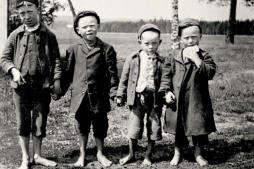
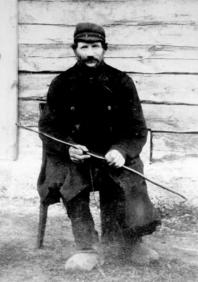

Poor Relief in the Past
Poor Auctions
Poor care auction, poor auction, sale by auction,
etc., was an old form of poor care in Sweden that
involved auctioning off paupers to the lowest
bidder, i.e. to the person who demanded the least
compensation from the parish or municipal poor
relief board for taking care of a pauper. Poor
auctions are best known for the auctioning off of
children, i.e. children's auctions, but the method was
actually used for paupers of all ages, except for
particularly old children.
The poor were divided into two classes. The first-
class of paupers included those who were unfit for
work, disabled, such as the physically or mentally
disabled, the terminally ill, the elderly, and children,
who had no relatives able or willing to care for them.
Second-class paupers included those who received
temporary poor relief from the Poor Relief Board.
According to the law, paupers were to be placed in
poorhouses in the first place. In the second instance,
the Poor Relief Board was obliged to pay for their
board, lodging, and support. Some parishes could
not afford to build a poorhouse, while others refused
to pay for one.
Rotegång and poor auctions were preferred as a
cheaper alternative to building a poorhouse. This
also meant that paupers could be used as labor.
Every year a placard with the names of the first class
of paupers was published in a notice in the parish
church. On the last Sunday before Christmas, the
poor auction was held in the parish courthouse after
the sermon. The Poor Relief Board auctioned the
pauper to the parishioners, who bid during the
auction on the compensation they required from the
Poor Relief Board for caring for the pauper for a
year. The person who offered to take care of the
pauper for the lowest compensation won the bid.
The Poor Relief Board reimbursed the bid winner for
food, lodging, clothing, and any medical care and
funeral expenses. At the same time, the pauper was
expected to work for the bidder to the best of his
ability. This auction was then repeated at the end of
the one-year period.
There are many accounts of how the paupers, often
children, were mistreated and abused and exploited
as cheap labor.
Defenseless/Vagrants
Being unemployed was considered a crime and
implied immediate punishment in the form of penal
servitude. This statute was instituted in 1664 and
was practiced until 1926 except for some revisions.
Thus, it was a crime to be poor and drift about
(vagrancy), i.e. to be unemployed.
You were then considered defenseless (försvarslös)
and could be sentenced to penal servitude
(straffarbete) in a house of correction. The 1885
vagrancy law decriminalized vagrancy (lösdriveri),
and vagrants could instead be sentenced to forced
labor (tvångsarbete), which society now regarded as a
treatment rather than a punishment. You were then
defenseless and could be taken out for forced labor
or active military service (krigstjänst).
Under the 1885 Act, vagrancy meant "failure to make
an honest living" and included those who were
"roaming about the country". A vagrant was "a person
who has no permanent abode, permanent employment,
means of livelihood, and who moves from place to
place, supporting himself by casual labor, begging and
similar, tramp, vagabond, hobo". Under the 1885 Act,
vagrants could be sentenced to forced labor.
The Crown Labor Corps (Kronoarbetskåren) was a
government hard labor institution that, among other
things, took in able-bodied defenseless persons from
prisons.
Poor Box
A poor box was a money box for alms to the poor
and sick and was often set up at
churches.
The image to the right shows a
poor box at Rättvik church,
Dalarna.
Image: Wikipedia.
The following writing is on the
board:
Ps 41:2
Säll är then som låter sig
wårda om then fattiga : ho-
nom skal HERREN hjelpa
i then onda tiden.
Blessed is he who cares for the poor:
the LORD will help him in the time of trouble.
II Cor. 9:7.
Hwar och en som han sielf
wil; icke med olust, eller af
twång. ty en galdan gif-
ware älskar GUD.
Each one must give as he has decided in his heart,
not reluctantly or under compulsion, for God loves a
cheerful giver.
Poor-Laws
According to older ordinances, parishes and towns
were asked to give alms to the poor and to build
poorhouses. These guidelines were drawn up by the
government in 1624 in the so-called Hospital
Ordinance (hospitalsförordningen) and were in force
until 1763.
In 1763, the first Poor Relief Ordinance was passed,
which established the obligation of each parish to
care for those of its citizens who were in need. In the
latter part of the 18th century, the concept of
domicile was also introduced, which meant that the
poor could only be helped by the parish in which
they were born.
However, no rights were given to the poor to claim
poor relief until 1847 by the ordinance issued that
year. This ordinance laid down certain basic
principles for the organization of poor relief.
However, the parishes were allowed to organize the
poor relief according to the conditions appropriate to
the locality.
According to the 1847 Poor Law Ordinance, a Poor
Relief Board (fattigvårdsstyrelse) was to be established
in each parish. The Ordinance laid down certain local
obligations and prohibited begging throughout the
country.
The parish committee, established in 1844, could
also function as a poor relief board. A parishioner
was entitled to poor relief after three years'
residence in the parish without receiving poor
relief, and the parish council could no longer refuse
people from moving to the parish, as it could under
the 1788 ordinance, if it was feared that an old or
less able-bodied person would be a burden on the
poor relief system.
On the other hand, the parish could refuse poor
relief if the person did not have the right of domicile
(hemortsrätt). Previously, this right had been obtained
through domicile registration. Long-running disputes
over domicile registration
(mantalsskrivning/kyrkoskrivning) were common in the
early 19th century. Anyone who was registered as a
domicile of the parish was then entitled to poor
relief.
Such disputes, as well as disputes between the
parishes in poverty matters, went to the County
Governor (Landshövdingen) for decision - a precursor
to the later County Court (länsrätten) - and could also
go up to the Kammarkollegium (The national judicial
board for public lands and funds) in Stockholm.
In 1871, a new law was passed concerning the poor
relief, based on the 1847 ordinance, with the
difference that the 1871 law significantly restricted
the right of the needy to assistance. The 1871 Act
remained in force until 1918 when a more up-to-date
law was passed on the subject.
In 1853, a new ordinance was introduced that was
relatively generous and allowed individuals to appeal
to the County Administrative Board (Länsstyrelsen).
In 1863, when the municipalities were formed and
replaced the former secular parishes (socken), the
municipal committee (kommunalnämnden) was
responsible for the care of the poor, unless a special
poor relief board (fattigvårdsstyrelse ) was appointed,
and this did not become compulsory until 1919.
In small rural municipalities (landskommuner), poor
relief was the main task of the municipal committee,
and old records show that it was not just a matter of
passively alleviating the worst of the hardships, but
that more constructive help was also given.
The 1871 Poor Law tightened up the provisions of
1847 and the subsequent ordinance of 13 July 1853,
among other things by making it impossible to
appeal against the decision of the municipal
committee on poor care. The right of appeal to the
County Administrative Board was reintroduced by
the 1918 Poor Law Ordinance.
The 1918 Poor Law reformed the system, and each
municipal administration became a poor care
community. The Act was adopted by the Swedish
Parliament on 14 June 1918 and remained in force
until 1955. It humanized the poor care system in
Sweden at the time and represented a transition
between the old-style poor care system and the
more modern social welfare system.
Among other things, poor auctions and “rotegång”
were banned, and the poorhouses became old
people's homes instead (ålderdomshem), and the
right of appeal was reintroduced as mentioned
above.
The image shows Tystberga old people's home and
poorhouse in 1929. Image: Södermanland Museum.
Poor relief, in the form of “rotegång” for paupers, was
thus banned in 1918 after having been banned for
children in 1847.
In the 1918 Poor Law, the concept of the poor and
his position in society differs considerably from that
of the 1871 law.
The introduction to the 1871 Act states that the poor
relief is "a gift of mercy, which the poor cannot insist
on", i.e. the poor should be satisfied with the help he
or she received.
The 1918 law goes in the opposite direction, now
emphasizing that the care of the poor is "the
obligation of society towards the poor". The view of the
poor in the 1871 Act is rather harsh and indifferent,
whereas the 1918 Act has a softer view of the poor
for the time and expresses the idea that "even the
poor have certain rights, which he can claim".
In 1937, each municipality was obliged to keep a
register of the relief activities in the municipality, i.e.
the municipality was obliged to document its poor
relief activities.
In rural municipalities with a municipal office, the
latter could keep the register and the responsibility
then lay with the municipal committee, otherwise, it
was the poor relief board that had the responsibility,
but from 1957 it became the social welfare board
(socialnämnden).
Child welfare committees (barnavårdsnämnd)
became compulsory in 1926. It was then possible to
appoint a three-member committee, which was a
combination of a child welfare board and a poor
relief board.
Government Supervision
The care of the poor was the parish's business,
from the beginning based on the old parish loyalty,
when, of course, one took care of the "children of the
parish" who had fallen on hard times.
However, parish loyalty did not last in the face of the
developments of the 19th century. The labor force
became more mobile and the more people who lived
from wage labor outside agriculture, the greater the
risk of poverty caused by unemployment and not just
by illness or old age as had been the case in the past.
The government's intervention in the care of the
poor was at first restricted to the laws and
regulations on the care of the poor. The Government
Inspector for Care of the Poor (fattigvårdsinspektör),
attached to the National Board of Health and
Welfare (Socialstyrelsen), which had been
established in 1912, was added by the 1918 Poor
Law. The title was changed by the 1924 Child Welfare
Act to Government Inspector of Poor Care and Child
Welfare, who directed the work of the poor care and
child welfare consultants. Under the 1918 Poor Law,
the County Administrative Board (Länstyrelsen) was to
supervise that municipalities provided poor services
in accordance with the law. In this task, the County
Administrative Board was to be assisted by a poor
care consultant (fattigvårdskonsulent).
No special training was required for the old parish
poor care. It is only when government supervision is
introduced that training becomes relevant. The first
social work training was established in Stockholm in
1921 and developed into the Social Pedagogical
Institute (Socialpedagogiska Institutet). Training in
Gothenburg was added in 1944, in Lund in 1947, and
in Umeå in 1962. These Social Institutes were run by
municipalities. In 1963, the Social Institutes were
nationalized and renamed as Social Colleges. The
Social Colleges were established in Örebro in 1976
and Östersund in 1971.
Summary of the 1918 Poor-Law


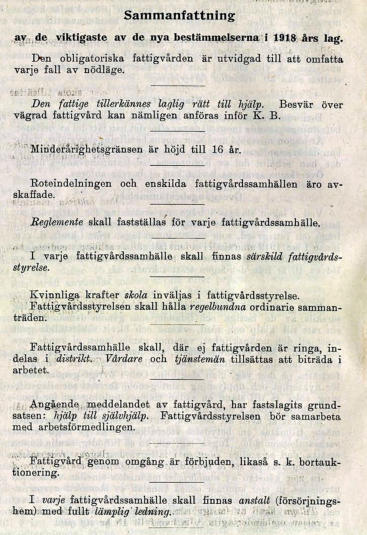

Menu at Sabbatsberg Poorhouse 1866
For the midday meal each day there is also a soup
dish, well prepared from healthy foods.
•
Sunday- Cabbage soap
•
Monday – Rice gruel
•
Tuesday – Meat broth
•
Wednesday - Rice gruel
•
Thursday – Yellow pea soap
•
Friday - Rice gruel
•
Saturday – Oatmeal gruel
Source: Menu at Sabbatsberg Poorhouse in
Stockholm in 1866. Stockholms stadsarkiv
SE/SSA/0053/ Sabbatsbergs vård- och ålderdomshem,
ämnesordnade handlingar F10, volym 1.
Stockholmskällan.
